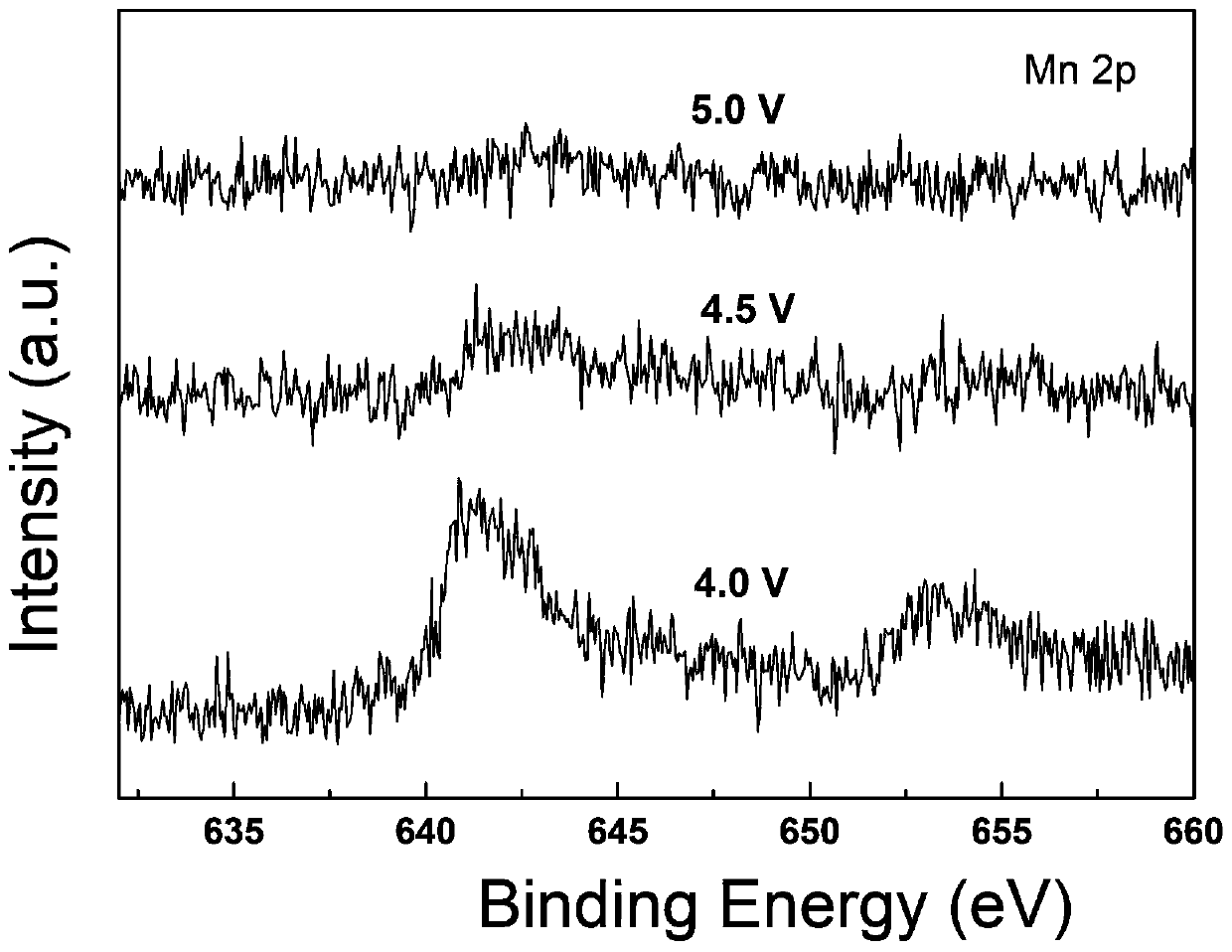High-voltage lithium ion battery electrolyte additive, electrolyte, battery and formation method thereof
An electrolyte additive, a technology for lithium ion batteries, applied in the field of lithium ion batteries, can solve the problems of inability to suppress the destruction of the transition metal ion anode interface film, limited improvement of battery electrochemical performance, inability to prevent HF corrosion damage, etc. The effect of popularizing application, improving electrochemical performance, improving efficiency and cycle performance
- Summary
- Abstract
- Description
- Claims
- Application Information
AI Technical Summary
Problems solved by technology
Method used
Image
Examples
Embodiment 1
[0027] Preparation of high-voltage lithium-ion battery electrolyte:
[0028] In a glove box filled with argon (moisture 6 , and stirred until it was completely dissolved to obtain high-voltage lithium-ion battery electrolyte solution A1.
[0029] Preparation of high-voltage lithium-ion batteries:
[0030] Will LiNi 0.5 mn 1.5 o 4(LNMO) is used as the positive electrode active material, carbon black is used as the conductive additive, and carboxymethyl cellulose (CMC), styrene-butadiene copolymer (SBR) is used as the binder, and the mass ratio is 92:5:1 :2 After mixing evenly in water, coat the aluminum foil current collector, dry, cold press, cut into discs with a diameter of φ14mm, and place them in the glove box. Graphite is used as the negative electrode active material, carbon black is used as the conductive additive, and the copolymer (SBR) of carboxymethylcellulose (CMC) and styrene and butadiene is used as the binder, according to the mass ratio of 93:2:2: 3 After ...
Embodiment 2
[0034] It is different from Example 1 in the preparation and formation of high-voltage lithium-ion battery electrolyte:
[0035] In a glove box filled with argon (moisture 6 , and stirred until it was completely dissolved to obtain high-voltage lithium-ion battery electrolyte A2.
[0036] After the prepared button battery was placed at 45°C for 10 hours, the battery was formed at 0.05C at 45°C using a blue battery charge and discharge tester (purchased from Wuhan Landian Electronics Co., Ltd.) , and then perform a loop test.
Embodiment 3
[0038] It is different from Example 1 in the preparation and formation of high-voltage lithium-ion battery electrolyte:
[0039] In a glove box filled with argon (moisture 6 , and stirred until it was completely dissolved to obtain high-voltage lithium-ion battery electrolyte A3.
[0040] After the prepared button battery was placed at 45°C for 10 hours, the battery was formed at 0.05C at 45°C using a blue battery charge and discharge tester (purchased from Wuhan Landian Electronics Co., Ltd.) , and then perform a loop test.
PUM
| Property | Measurement | Unit |
|---|---|---|
| diameter | aaaaa | aaaaa |
| diameter | aaaaa | aaaaa |
Abstract
Description
Claims
Application Information
 Login to View More
Login to View More - R&D
- Intellectual Property
- Life Sciences
- Materials
- Tech Scout
- Unparalleled Data Quality
- Higher Quality Content
- 60% Fewer Hallucinations
Browse by: Latest US Patents, China's latest patents, Technical Efficacy Thesaurus, Application Domain, Technology Topic, Popular Technical Reports.
© 2025 PatSnap. All rights reserved.Legal|Privacy policy|Modern Slavery Act Transparency Statement|Sitemap|About US| Contact US: help@patsnap.com



